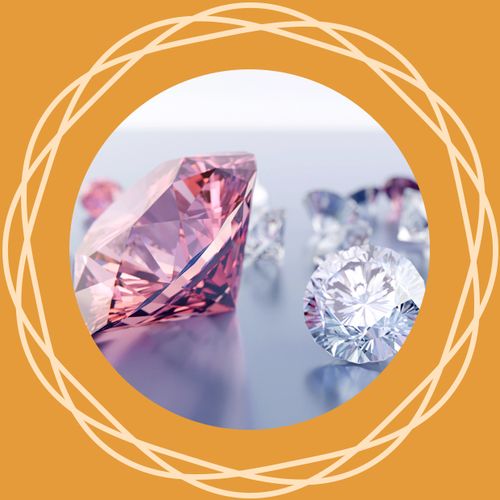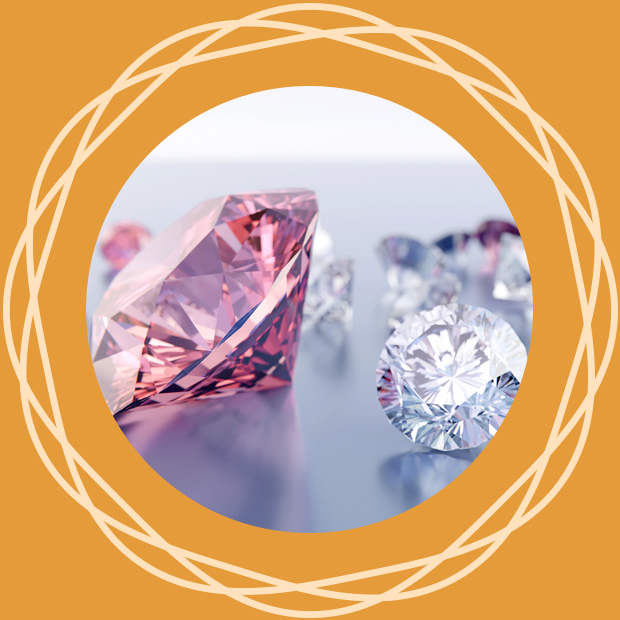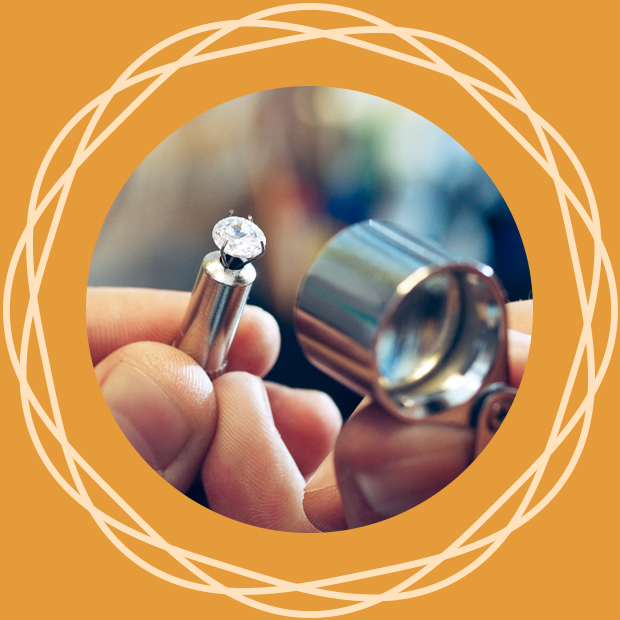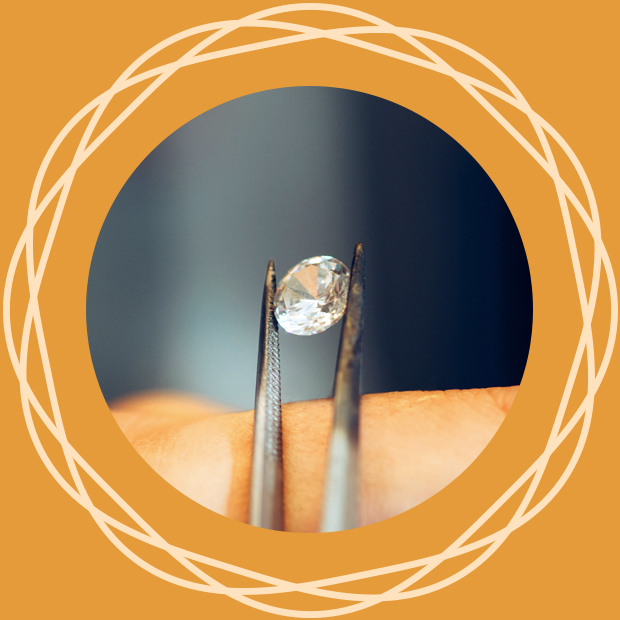INSPIRATION
How Are Lab-Grown Diamonds Made?


How Are
Lab-Grown
Diamonds Made?
Diamonds have long been cherished for their sparkling brilliance and timeless allure. But as our understanding of sustainability grows, a modern twist to this ancient gem is gaining popularity—lab-grown diamonds. While they offer the same dazzling beauty as their natural counterparts, these diamonds are created through advanced technological processes.
This article delves into the fascinating world of lab-grown diamonds, exploring how they are made and how they differ from natural diamonds.

How Do Natural Diamonds Form?

Natural diamonds have a formation story that's as old as the Earth itself. Created deep within the Earth's mantle, these dazzling stones are formed over a period of millions to billions of years. The process begins when carbon atoms are subjected to extreme heat and pressure, typically at depths of 140 to 190 kilometres.
This environment compacts the carbon atoms into a crystal lattice structure, giving diamonds their trademark hardness and sparkle. Over time, volcanic eruptions can bring these diamonds closer to the Earth's surface, where they can be mined.
In contrast, lab-grown diamonds are the result of human ingenuity mimicking nature's process, but at a far accelerated pace. Using advanced technologies, it's possible to create a lab-grown diamond in a matter of weeks or months rather than millennia.

The Production Processes Of Lab-Grown Diamonds

Understanding how lab-grown diamonds are produced involves delving into the two most commonly used methods: Carbon Vapour Deposition (CVD) and High-Pressure High-Temperature (HPHT). Each of these methods has its own unique process, advantages, and end results.
Carbon Vapour Deposition Process
The Carbon Vapour Deposition (CVD) method is a relatively newer technique. The process begins in a vacuum chamber where a thin slice of diamond, known as a substrate, is placed.
Methane gas, which is a carbon source, and hydrogen are introduced into the chamber. Using a microwave generator, the gases are heated to extreme temperatures, causing the methane to break apart and release carbon atoms. These atoms then deposit onto the substrate, slowly building up layer by layer to form a diamond.
The whole process usually takes a few weeks and is particularly popular for producing diamonds with fewer inclusions and impurities.
High-Pressure High-Temperature Process
The High-Pressure High-Temperature (HPHT) method is one of the earliest techniques used to create lab-grown diamonds. It seeks to mimic the natural conditions under which diamonds form. In this process, a carbon source, usually graphite, is placed in a press capable of generating extremely high pressure and temperature.
The graphite is subjected to conditions of about 1.3 million pounds per square inch of pressure and temperatures upwards of 2,200 degrees Celsius. These extreme conditions cause the graphite to convert into a crystalline diamond structure. Like its CVD counterpart, the HPHT process also takes a few weeks to complete.
Both methods offer a fascinating glimpse into human ingenuity, demonstrating how advanced technology can accelerate a process that would take nature millions of years to accomplish.

CVD Vs HPHT Lab Diamonds

When it comes to the finished diamonds, there's been a significant amount of debate and misinformation regarding the comparative quality of CVD and HPHT diamonds. In truth, aside from the production method, there's essentially no discernible difference between diamonds produced by the two methods. Both CVD and HPHT can yield diamonds that are optically, chemically, and physically indistinguishable from their naturally-formed counterparts.
It's essential to note that lab-grown diamonds, irrespective of their production method, undergo stringent grading during certification. Leading grading institutions like GIA and IGI evaluate them, enabling buyers to make informed choices based on traditional parameters such as cut, colour, and clarity. Often, diamonds graded with an Excellent cut, colours ranging from D to F, and clarities between VS2 to SI1 are seen as the ideal blend of beauty and value.
In a broader perspective, while HPHT might typically produce diamonds with superior colours and CVD may yield diamonds with higher clarities, both methods are perfectly capable of crafting diamonds that rival the splendour and quality of naturally-sourced diamonds—and they're graded using the same stringent standards.

Where Are Lab-Grown Diamonds Produced?

The production of lab-grown diamonds is a global endeavour, but there are some key players in the industry worth noting. China is by far the world's largest producer, accounting for an estimated 56 percent of the global lab-grown diamond market based on production in 2019. Chinese manufacturers have heavily invested in the technology and infrastructure required to produce these gemstones, leading to an impressive market share.
Another noteworthy fact is the role of the United States in the lab-grown diamond industry. While the U.S. may not be a significant producer, it is the largest importer of lab-grown diamonds. Manufacturers of lab-grown diamonds have seen an increase in export volumes, with the U.S. being the primary destination. This is perhaps a reflection of the changing consumer attitudes towards lab-grown diamonds in a market historically dominated by natural diamonds.
Africa, typically associated with natural diamonds, is also a contender in the lab-grown sector, particularly in the production of industrial diamonds. In fact, Africa is a significant source of industrial diamonds, contributing more than half of all industrial diamonds globally. Though its contribution to gem-quality lab-grown diamonds may be less, Africa's role should not be discounted.
These regions highlight the evolving landscape of diamond production, shifting from the traditional, natural sources to more sustainable, lab-grown alternatives.

Explore Our Lab-Grown Diamond Collection

In the ever-evolving world of diamonds, lab-grown options offer an ethical and often more affordable alternative to natural gems. From CVD to HPHT, the technology behind these diamonds is as fascinating as the stones themselves.
At Rich Diamonds, we offer a range of lab-grown diamond jewellery. From stunning earrings to necklaces and rings, there is a wide range of beautiful diamond jewellery to explore.

Frequently Asked Questions
Are lab-grown diamonds real?
Yes, lab-grown diamonds are real diamonds with the same physical, chemical, and optical properties as natural diamonds.
What is a lab-grown diamond made of?
Lab-grown diamonds are made of carbon, just like natural diamonds, and form through controlled processes that replicate natural diamond formation.
Are lab-grown diamonds as good as natural diamonds?
Yes, lab-grown diamonds possess the same qualities as natural diamonds and are indistinguishable without specialised equipment.
Are lab-grown diamonds considered fake?
No, lab-grown diamonds are not fake. They are genuine diamonds, only their origin is from a lab rather than the Earth's mantle.
Are lab-grown diamonds as strong as natural diamonds?
Yes, lab-grown diamonds have the same hardness and durability as natural diamonds, ranking a 10 on the Mohs scale.
Yes, many lab-grown diamonds are certified by reputable grading laboratories, ensuring their quality and authenticity.

